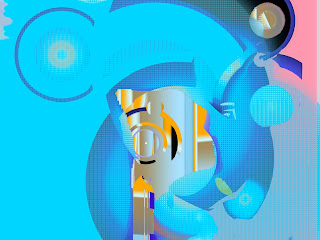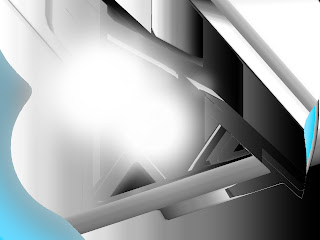Engineering not only helps to fix the world, but to reimagine and innovate the world; science not only helps to see through the world, but to integrate, unify and harmonize the world.
Engineering practices and disciplines require scientific approaches and structural problem-solving capabilities.
Science = "What" & "How." Engineering = making things work as scientifically, artistically, and correctly as possible: Science is about design, construction, and operations, based on the principles of logic and the patterns of nature. What defines science from chance is the ability to repeat a process with the same resultant solution every time, through the application of known facts. Engineering is an academic discipline, also a set of practices for solving problems technically; Engineers think about the goals, but their first concern should be meeting the narrower requirements that their aspect of the overall design must meet. An engineer must be able to design down to the last detail, whereas an architect need not be concerned with all of the contexts.
Science claims to be based on both inductive and deductive reasoning; theory and practice; engineering tries to figure out “what” and “how”; makes sure those elements are put together well. It’s the ability to produce solutions in a problem domain repeatedly. The difference between engineering as art and engineering as science is the objectiveness of requirements/design specification. With engineering as science, different people specify requirements and design, you get the repetitive results, and different people read the resulting specifications, you get the same explanation. The scientific side of engineering is for automation, reliability, and continuity; and the artistic side of engineering is for imagination, innovation, and invention, etc. Science allows us to gain an in-depth understanding of the world; and engineering helps to design and build a modern world scientifically.
Software development is an engineering discipline with the right mix of art and science: Everything about software is intangible and it starts with 'is there a problem.” Cool software products increase user productivity and improve customer satisfaction. Software applications will become more interrelated as we move to a world of systems-of-systems in which constraints govern how and what we develop. From a product management perspective, quality is a function of scope, budget, and resources. Make sure the software management meets the business requirement, planning, schedule, cost, and performance standards. Functionality is the only one angle to look at the software, you have to think in terms of both tangible and intangible, make sure it is reliable, reusable, and portable.
Software is never done. It needs to be enhanced to be brought closer to ideal, and ideal is continuing to change. This leads towards viewing software development as an ongoing improvement activity. Overall speaking, software management is the step-wise scenario and interdisciplinary approach that would include strategic and tactical planning, systems engineering, concurrent engineering, engineering design, quality engineering, portfolio management and optimization, systems ecology, etc.
Confirm specification and the characteristics of quality software and assess product/service performance scientifically: Software quality is eminently measurable and achievable but only if we use suitably scientific and robust requirements elicitation and product development techniques. These techniques span the full spectrum from agile to well-planning. Besides functioning delivery, what about measures of modularity, reusability, conformance to architectural standards, use of patterns, loose coupling, functional cohesion, testability, accessibility, portability, install-ability, reconfigurability. The whole spectrum requires high levels of training and discipline.
Scientific discipline is precise, exact and can be accurately and logically represented and reused. Engineering as a sub discipline of science requires experimenting, practicing; pattern discovery, logical reasoning, modeling, designing, testing, etc. Scientific inquiries enable people to clarify: - Can you collect quality information for taking certain initiatives? How easy is it to get started on an assignment? Are there sufficient technical skills to get the work done? Is there good up to date documentation, preferably automatically created? Are there safeguards in place before you deliver code to an environment that ensures adherence to standards, and run tests to ensure quality, reliability. Engineering is a technique methodology to solve problems effectively and efficiently.
More people are born into our technology-centered world, technical skills will become more fundamental in dealing with the variety of cross boundary issues. Science is not always rigid, there is a variety of categorization, generalization, specialization, inference & deference logic in it. Engineering is no longer an isolated discipline only a few geeks work on it, but a common practice everyone has the chance to play around it. Engineering not only helps to fix the world, but to reimagine and innovate the world; science not only helps to see through the world, but to integrate, unify and harmonize the world.
Science claims to be based on both inductive and deductive reasoning; theory and practice; engineering tries to figure out “what” and “how”; makes sure those elements are put together well. It’s the ability to produce solutions in a problem domain repeatedly. The difference between engineering as art and engineering as science is the objectiveness of requirements/design specification. With engineering as science, different people specify requirements and design, you get the repetitive results, and different people read the resulting specifications, you get the same explanation. The scientific side of engineering is for automation, reliability, and continuity; and the artistic side of engineering is for imagination, innovation, and invention, etc. Science allows us to gain an in-depth understanding of the world; and engineering helps to design and build a modern world scientifically.
Software development is an engineering discipline with the right mix of art and science: Everything about software is intangible and it starts with 'is there a problem.” Cool software products increase user productivity and improve customer satisfaction. Software applications will become more interrelated as we move to a world of systems-of-systems in which constraints govern how and what we develop. From a product management perspective, quality is a function of scope, budget, and resources. Make sure the software management meets the business requirement, planning, schedule, cost, and performance standards. Functionality is the only one angle to look at the software, you have to think in terms of both tangible and intangible, make sure it is reliable, reusable, and portable.
Software is never done. It needs to be enhanced to be brought closer to ideal, and ideal is continuing to change. This leads towards viewing software development as an ongoing improvement activity. Overall speaking, software management is the step-wise scenario and interdisciplinary approach that would include strategic and tactical planning, systems engineering, concurrent engineering, engineering design, quality engineering, portfolio management and optimization, systems ecology, etc.
Confirm specification and the characteristics of quality software and assess product/service performance scientifically: Software quality is eminently measurable and achievable but only if we use suitably scientific and robust requirements elicitation and product development techniques. These techniques span the full spectrum from agile to well-planning. Besides functioning delivery, what about measures of modularity, reusability, conformance to architectural standards, use of patterns, loose coupling, functional cohesion, testability, accessibility, portability, install-ability, reconfigurability. The whole spectrum requires high levels of training and discipline.
Scientific discipline is precise, exact and can be accurately and logically represented and reused. Engineering as a sub discipline of science requires experimenting, practicing; pattern discovery, logical reasoning, modeling, designing, testing, etc. Scientific inquiries enable people to clarify: - Can you collect quality information for taking certain initiatives? How easy is it to get started on an assignment? Are there sufficient technical skills to get the work done? Is there good up to date documentation, preferably automatically created? Are there safeguards in place before you deliver code to an environment that ensures adherence to standards, and run tests to ensure quality, reliability. Engineering is a technique methodology to solve problems effectively and efficiently.
More people are born into our technology-centered world, technical skills will become more fundamental in dealing with the variety of cross boundary issues. Science is not always rigid, there is a variety of categorization, generalization, specialization, inference & deference logic in it. Engineering is no longer an isolated discipline only a few geeks work on it, but a common practice everyone has the chance to play around it. Engineering not only helps to fix the world, but to reimagine and innovate the world; science not only helps to see through the world, but to integrate, unify and harmonize the world.












































0 comments:
Post a Comment